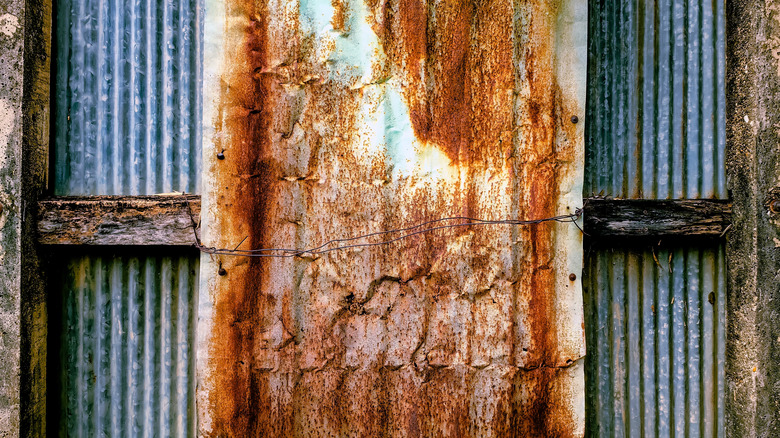What Stops Salt Corrosion On Aluminum?
Unlike iron and steel, aluminum doesn't rust from simple exposure to water and humidity. However, aluminum is vulnerable to corrosion when salt is present in the water or air surrounding the metal. Despite that, aluminum is an excellent material for use in outdoor products, such as boats, automotive wheels, patio furniture, railings, and exterior light fixtures.
Both aluminum and salt are ever-present in our daily lives. Learning how to deal with the corrosion that happens when they meet is essential. Stopping salt corrosion in its tracks combines gentle scrubbing with mild chemicals and application of a protective barrier. Here's what you need to know about how to get rid of salt corrosion on aluminum and keep it from coming back.
Remove Surface Corrosion
Salt corrosion on aluminum shows up as pits and chalky white powder on the metal's surface. To determine the extent of the damage, remove the powdery substance by wetting the area with vinegar, lemon juice, or a commercial aluminum cleaner. While wet, gently scrub the area with a mildly abrasive cleaning pad until you get down to the metal. Aluminum is a soft metal, so avoid the temptation to scrub hard with a stiff scrubbing material.
Sand Pitted Areas
For heavily pitted areas of salt corrosion on aluminum, sand the affected surface to restore a smooth finish. Before sanding, remove dirt and debris with dish soap and water and rinse the area.
Wet or dry sand heavily pitted areas with 200- to 400-grit sandpaper until the pitted areas become smooth. If you desire a polished finish, continue sanding with 600- and 800-grit wet or dry papers. Continue polishing with a buffing wheel and rubbing compound for a deeper shine.
Protect With Paint
To protect your aluminum items from further corrosion, apply a protective coating, such as a clear-coat protectant or protective paint. However, before using any coatings, aluminum requires extra preparation, called etching, to ensure the protection lasts.
Etching involves applying a mild acid to the metal's surface to create tiny scratches that the coating can grab on to and hold. Etching can be as simple as painting the metal with vinegar or applying commercially available etching acids designed for the purpose.
You can now apply a protective clear coat if you wish to retain the look of bare aluminum or coat the surface with specially designed primer and paint. Remember that coated aluminum can still fall prey to oxidation under certain conditions.
Use the Right Fasteners
Another way to keep corrosion at bay in the presence of salt is by using the right screws and fasteners for the metal. Galvanic corrosion occurs when metals in contact with each other react on a molecular level. The process is more pronounced when salt water is present. If you're constructing with aluminum, use only fasteners made of aluminum, stainless or carbon steel, or brass to avoid galvanic reactions.
